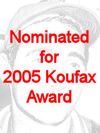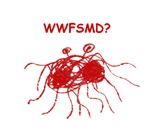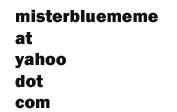Robert Parry on the gelding of the CIA
George W. Bush has been criticized for disdaining fact in favor of faith in his own instincts. But he is savvy about the dangers that information can present to his authority over the government and the American people.
That is why the first priority of his second term has been the elimination of the few government sources of information that could challenge the images he wants to project to the public. Bush doesn’t want the State Department or the Central Intelligence Agency portraying his Iraq and other foreign policies as abject failures or reckless adventures.
So, by attacking these remaining pockets of analytical resistance, Bush is moving to ensure that his administration can keep much of the U.S. population seeing a near-empty cup as almost entirely full, a concept known in the intelligence world as “perception management.”
...
In other words, conservative commentators were afraid that plainly accurate analyses by CIA officials represented a threat to Bush’s power and justified his exacting retribution against these out-of-step analysts. It seems that no matter how much power Bush and the Republicans amass, their media apologists always make them out to be the victims.
It’s also a misunderstanding of history to claim that the CIA exists to “serve the president.” While it may be true that the “operations directorate” was created as a secret paramilitary arm for the U.S. executive, the CIA’s analytical division was established to provide unvarnished information to both the president and other parts of the U.S. government, including Congress.
Even at the height of the Cold War in the 1950s and 1960s, the CIA’s analytical division took pride in telling presidents what they didn’t want to hear – such as debunking Eisenhower’s “bomber gap” or Kennedy’s “missile gap” or Johnson’s faith in the air war against North Vietnam.
Worth a read.






0 Comments:
Post a Comment
<< Home